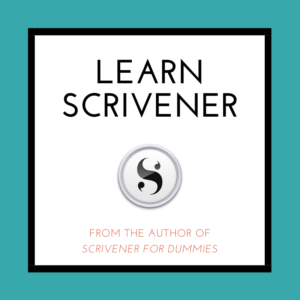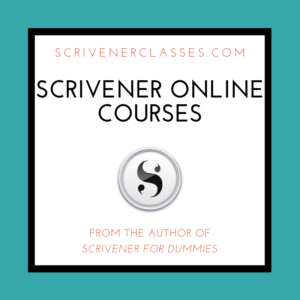Writing is a journey, and like any journey, it requires preparation. Pre-writing is the crucial step that acts as your GPS, guiding you through the process and ensuring you reach your destination smoothly. Whether you’re drafting an essay, a blog post, a novel, or a business report, the pre-writing phase is essential for clarity, direction, and coherence. In this blog post, we will delve into the pre-writing process in detail, breaking it down into manageable steps to help you master this crucial part of writing.

Introduction to Pre-Writing
Before you start putting words on paper, it’s important to understand what pre-writing is and why it’s so important. Pre-writing is the planning and organizing phase before you begin writing your actual content.
It involves brainstorming, researching, outlining, and structuring your ideas. This step helps you gather your thoughts, find your focus, and create a roadmap for your writing.

Why Pre-Writing Matters
Pre-writing is an essential step that offers numerous benefits when it comes to writing. Firstly, it helps you clarify your thoughts and ideas, allowing you to have a clear understanding of what you want to convey before you start writing. This clarity is crucial as it sets the foundation for a well-structured piece of writing.
Additionally, pre-writing enables you to organize your ideas in a logical manner. By planning your writing beforehand, you can ensure that your thoughts are presented coherently, making it easier for your readers to follow and comprehend your content.
Furthermore, engaging in a good pre-writing process can greatly enhance efficiency. With a well-defined plan in place, you can write more quickly and effectively, saving valuable time in the process.
Moreover, pre-writing helps you maintain focus on your main topic, preventing you from digressing into irrelevant tangents and ensuring that your writing remains concise and on point.
Step 1: Understanding the Purpose and Audience
The first step in the pre-writing process is understanding the purpose of your writing and who your audience is. Knowing these two aspects will guide your content, tone, and structure

Define Your Purpose
Ask yourself:
– What do I want to achieve with this writing?
– Am I trying to inform, persuade, entertain, or explain something?
For example, if you’re writing a blog post, your purpose might be to inform and engage your readers. If you’re writing a business report, your purpose might be to provide data and recommendations.

Know Your Audience
Consider who will be reading your work:
– What is their age group?
– What is their level of knowledge on the topic?
– What are their interests and preferences?
Understanding your audience helps you tailor your language, tone, and content to meet their needs and expectations.
Step 2: Brainstorming Ideas
Once you know your purpose and audience, it’s time to brainstorm ideas. Brainstorming is about generating as many ideas as possible without worrying about whether they are good or bad. This process helps you explore different angles and perspectives.

Techniques for Brainstorming
Here are some strategies to help you gather your thoughts and generate ideas about your topic:
1. Free Writing: Find a quiet space, set a timer for 10-15 minutes, and start writing whatever comes to mind about your topic. Don’t worry about editing or judging your ideas at this stage. Just let your thoughts flow freely onto the page.
2. Mind Mapping: Create a visual diagram with your main topic in the center and related ideas branching out from it. This technique helps you visualize the connections between different ideas and can spark new thoughts.
3. Listing: Take some time to jot down a list of ideas, concepts, or questions related to your topic. This method is simple and allows you to easily organize and revisit your ideas later.
4. Questions: Challenge yourself to ask a series of questions about your topic. Who, what, where, when, why, and how can be great starting points for exploring different aspects of your topic and generating new ideas.
Step 3: Conducting Research
After brainstorming, you’ll likely have a list of potential ideas and topics to cover. The next step is to conduct research to gather information and evidence to support your writing.

How to Conduct Research
When conducting research, the first step is to identify various sources from which you can gather information. These sources may include books, academic journals, reputable websites, interviews with experts, and more.
Once you have gathered your sources, it’s important to evaluate their credibility and reliability. Look for sources that are authoritative, accurate, and current to ensure the information you gather is trustworthy.
As you delve into your research, it’s essential to take detailed notes on key points, quotes, and data that may be relevant to your writing. Organizing your notes by topic can make it easier to reference the information later and keep your thoughts organized.
Lastly, it’s crucial to keep track of all your sources to ensure you can properly cite them in your writing. Proper citation is essential for avoiding plagiarism and giving credit to the original authors.
Step 4: Organizing Your Ideas
With your research in hand, it’s time to organize your ideas. This step involves grouping related ideas together and arranging them in a logical order.

Creating an Outline
An outline is a roadmap for your writing. It helps you structure your content and ensures you cover all necessary points.
1. Introduction: Your introduction should be captivating and engaging, aiming to capture the reader’s attention. Provide a brief overview of your topic to set the stage for what’s to come.
2. Main Points: Clearly identify the main points you intend to address in your writing. Each main point should be distinct and substantial enough to warrant its own section or paragraph.
3. Supporting Details: For each main point, make sure to provide a thorough list of supporting details, evidence, or examples that bolster your argument and provide depth to your writing.
4. Conclusion: Conclude your writing with a summary that revisits your main points and reinforces the purpose of your piece. This conclusion should leave a lasting impression on the reader.
Types of Outlines
1. Topic Outline: Uses short phrases or keywords for each section.
2. Sentence Outline: Uses full sentences to describe each section in detail.
Choose the type that works best for you. A detailed outline will make the writing process smoother and more efficient.
Step 5: Develop a Thesis Statement
For many types of writing, especially essays and reports, a thesis statement is essential. It’s a concise summary of the main point or claim of your writing.
Crafting a Thesis Statement
1. Be Clear and Specific: Your thesis should clearly state your main point in a specific and focused manner.
2. Take a Stand: Make sure your thesis expresses a clear position or argument.
3. Preview Your Main Points: Briefly mention the main points you will cover to support your thesis.
For example, a thesis statement for a blog post on the benefits of exercise might be: “Regular exercise improves mental health, boosts energy levels, and promotes longevity.”
Step 6: Setting Goals and Deadlines
Writing a large piece of content can be daunting. Setting goals and deadlines can help you manage your time and stay on track.
Break Down the Task
1. Set Milestones: Divide your writing into smaller sections and set deadlines for each. For example, complete the introduction by a certain date, then move on to each main section.
2. Daily Goals: Set daily writing goals. This can be a word count or completing a specific section.
3. Review and Adjust: Regularly review your progress and adjust your goals as needed.
Step 7: Freewriting and Drafting
With a solid plan in place, it’s time to start writing. Begin with a freewriting session to get your ideas flowing. Then, move on to drafting your content.
Freewriting
Freewriting is a technique where you write continuously for a set period without worrying about grammar, spelling, or structure. This helps you overcome writer’s block and get your ideas down on paper.
Drafting
Once you’ve done some freewriting, start drafting your content. Follow your outline and focus on getting your ideas down. Don’t worry about perfection at this stage; you’ll refine your writing later.
Step 8: Revising and Editing
After completing your draft, it’s time to revise and edit. This step involves refining your content, improving clarity, and correcting errors.
Revising
1. Read Aloud: Before finalizing your writing, read it aloud to yourself or someone else. This can help you identify any awkward sentences and improve the overall flow and rhythm of your writing.
2. Check Structure: Take the time to ensure that your writing follows a clear and logical structure. Make sure that your main points are effectively presented and that there is a cohesive flow throughout your piece.
3. Refine Thesis: Double-check that your thesis statement is well-defined and clearly articulated. Ensure that your supporting content effectively aligns with and reinforces your thesis.
4. Enhance Clarity: Simplify any complex or convoluted sentences and ensure that your ideas are expressed clearly and concisely. This will help make your writing more accessible and easier for your audience to understand.
Editing
1. Grammar and Spelling: Check for grammar and spelling errors. Use tools like spell checkers, but also review manually.
2. Consistency: Ensure consistency in tone, style, and formatting.
3. Punctuation: Check for proper punctuation to improve readability.
Step 9: Seeking Feedback
Before finalizing your writing, seek feedback from others. Fresh eyes can catch errors you might have missed and provide valuable insights.
How to Get Feedback
1. Peer Review: Ask a friend or colleague to review your writing and provide feedback.
2. Professional Editors: Consider hiring a professional editor for important projects.
3. Writing Groups: Join writing groups or forums where members provide constructive criticism.
Step 10: Finalizing Your Writing
After incorporating feedback and making final revisions, it's time to finalize your writing.

Final Checks
1. Proofread: Do a final proofread to catch any remaining errors.
2. Format: Ensure your writing is properly formatted according to the required style or guidelines.
3. Cite Sources: Double-check that all sources are cited correctly.
Conclusion,
By understanding your purpose and audience, brainstorming ideas, conducting research, organizing your thoughts, and following the other steps outlined in this blog post, you can master the pre-writing process and make your writing journey smoother and more efficient.
Remember, pre-writing is your GPS – it guides you, keeps you on track, and ensures you reach your destination with confidence and clarity. Happy writing!
Beyond Words on a Page
Kevin
Elevate Your Writing Process with Scrivener
Are you ready to master the writing journey and ensure every step is seamless and efficient? Look no further than Scrivener, the ultimate tool designed to support writers at every stage of the process, from pre-writing to finalizing your masterpiece.
Why Scrivener is Your Perfect Writing Companion
In our recent blog post, we emphasized the importance of the pre-writing process – the critical planning and organizing phase that sets the foundation for successful writing. Scrivener is the ideal tool to help you navigate this process with ease. Here's how:
1. Organize Your Ideas Effortlessly
Scrivener's intuitive interface allows you to gather all your notes, research, and ideas in one place. Use the corkboard and outliner features to visualize your thoughts, rearrange sections, and create a structured plan for your writing. Say goodbye to scattered notes and hello to a streamlined workflow.
2. Research at Your Fingertips
Conducting research is a breeze with Scrivener. Import PDFs, images, web pages, and other reference materials directly into your project. Keep your sources organized and accessible without ever leaving the app. This way, you can focus on synthesizing information and crafting your content.
3. Flexible Outlining
Create detailed outlines with ease using Scrivener's outlining tools. Whether you prefer a topic outline or a sentence outline, Scrivener adapts to your style. Organize your main points and supporting details, ensuring your writing follows a logical structure that captivates your audience.
4. Customizable Templates
Scrivener offers a variety of templates for different writing projects, from novels and screenplays to academic papers and blog posts. Start with a template that suits your needs, and customize it to fit your unique project. This saves you time and ensures consistency across your work.
5. Seamless Drafting and Revising
Transition from pre-writing to drafting without missing a beat. Scrivener's distraction-free writing mode helps you focus on getting your ideas down. When it's time to revise, use the split-screen view to compare your draft with your outline, research notes, or feedback, making revisions smoother and more efficient.
6. Goal Setting and Progress Tracking
Stay motivated and on track with Scrivener's goal-setting features. Set word count targets for your overall project or individual writing sessions. Track your progress and celebrate milestones, ensuring you meet your deadlines and achieve your writing goals.
7. Collaborate and Share
Export your work in multiple formats, including Word, PDF, and plain text. Share your drafts with peers for feedback, or submit your polished manuscript to publishers with confidence. Scrivener's robust export options ensure your work looks professional in any format.
Special Offer: Start Your Writing Journey with Scrivener
To celebrate your commitment to mastering the writing journey, we're offering an exclusive on Scrivener.
Don't miss this opportunity to elevate your writing process with the most powerful writing software available.
Ready to Take the Next Step?
Visit [Scrivener's Website](https://www.literatureandlatte.com/scrivener/overview) today and download a free trial. Experience firsthand how Scrivener can transform your writing process, making every step from pre-writing to final draft more efficient, organized, and enjoyable.
With Scrivener, you'll have the tools you need to turn your ideas into reality. Master the writing journey with confidence and precision. Your best writing is just a click away.
---
Unlock your writing potential with Scrivener – your ultimate guide on the path to writing success!
Kevin




